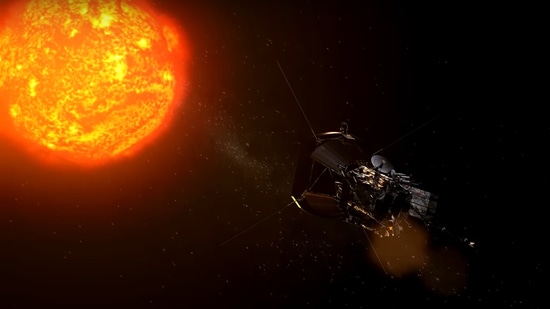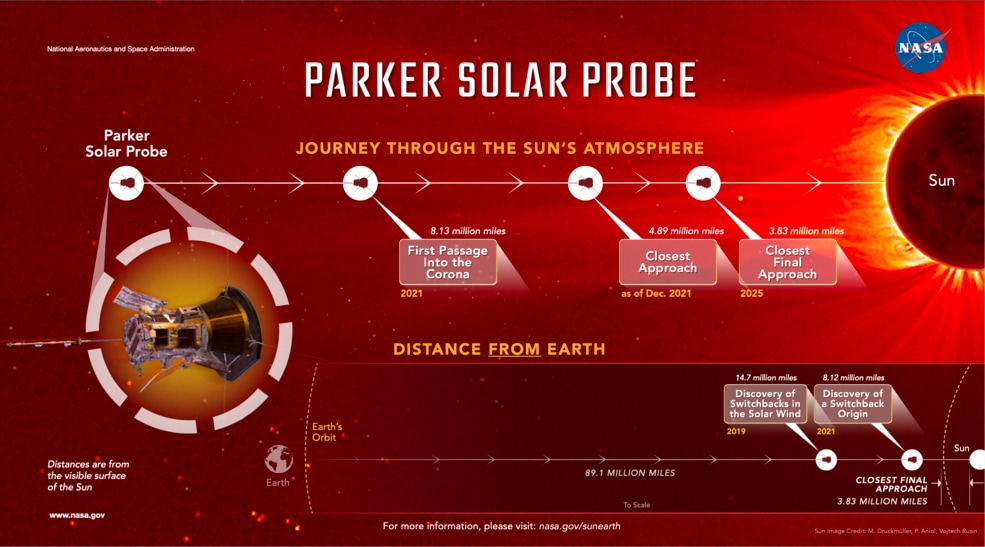Nasa spacecraft ‘touches’ the Sun. What this historic milestone means for science
According to Nasa, the success of the Parker Solar Probe represents much more than technological innovation. The spacecraft's landmark achievement has restored hope about solving age-old mysteries about the red-hot star.
A spacecraft launched by the National Aeronautics and Space Administration (Nasa) has achieved a feat once thought impossible. For the first time in history, a spacecraft has touched the corona of the Sun – an extreme environment that's roughly 2 million degrees Fahrenheit – in a milestone that marks one major step for the spacefaring organisation and one giant leap for mankind and solar science.

The rocketship, called the Parker Solar Probe, successfully entered and flew through the Sun's upper atmosphere – the corona – on April 28 and sampled particles and magnetic fields situated on the surface of the red-hot star.
A spacecraft launched by the National Aeronautics and Space Administration (Nasa) has achieved a feat once thought impossible. For the first time in history, a spacecraft has touched the corona of the Sun – an extreme environment that's roughly 2 million degrees Fahrenheit – in a milestone that marks one major step for the spacefaring organisation and one giant leap for mankind and solar science.
The rocketship, called the Parker Solar Probe, successfully entered and flew through the Sun's upper atmosphere – the corona – on April 28 and sampled particles and magnetic fields situated on the surface of the red-hot star.
|#+|
How was it made possible?
The historic moment was achieved thanks to a large collaboration of scientists and engineers, including members of the Center for Astrophysics at the Harvard & Smithsonian (CfA) who built and monitor a key instrument on board the probe – the Solar Probe Cup. This cup is the very device that collected particles from the Sun's atmosphere, helping scientists verify that the spacecraft had indeed crossed into the corona.

According to data collected by the cup, the spacecraft entered the corona three times on April 28, at one point for up to five hours.
A scientific paper describing the historic milestone was published in the Physical Review Letters, in which CfA astrophysicist Anthony Case explained how the Solar Probe Cup itself was an incredible feat of engineering.
“The amount of light hitting the Parker Solar Probe determines how hot the spacecraft will get,” Case explained. “While much of the probe is protected by a heat shield, our cup is one of only two instruments that stick out and have no protection. It's directly exposed to the sunlight and operating at a very high temperature while it's making these measurements; it's literally red-hot, with parts of the instrument at more than 1,800 degrees Fahrenheit [1,000 degrees Celsius], and glowing red-orange.”
To avoid degradation, the device was constructed of materials that have high melting points, like tungsten, niobium, molybdenum, and sapphire.
Describing the Sun's atmosphere
Unlike Earth, the Sun doesn’t have a solid surface. But it does have a superheated atmosphere, made of solar material bound to the Sun by gravity and magnetic forces. As rising heat and pressure push that material away from the Sun, it reaches a point where gravity and magnetic fields are too weak to contain it.
The corona is the outermost layer of the Sun's atmosphere where strong magnetic fields bind plasma and prevent turbulent solar winds from escaping. The point where solar material escapes the force of gravity and the magnetic field is called the Alfvén critical surface and it marks the end of the solar atmosphere and the beginning of the solar wind.
Beyond the Alfvén critical surface, the solar wind moves so fast that waves within the wind cannot ever travel fast enough to make it back to the Sun – severing their connection.
‘Closer than ever before’
Until now, researchers were unsure exactly where the Alfvén critical surface lay. Based on remote images of the corona, estimates had put it somewhere between 10 to 20 solar radii from the surface of the Sun – 4.3 to 8.6 million miles.
Prior to April 28, 2021, the Parker Solar Probe had been flying just beyond this point but on this date, during its eighth flyby of the Sun, the spacecraft encountered the specific magnetic and particle conditions at 18.8 solar radii (around 8.1 million miles) above the solar surface that told scientists it had crossed the Alfvén critical surface for the first time and finally entered the solar atmosphere.
What this milestone means for science
According to Nasa, the success of the Parker Solar Probe represents much more than technological innovation. Given that the Sun had largely remained inaccessible to scientists until now, the spacecraft's landmark achievement has restored hope about solving age-old mysteries about the red-hot star.
For example, we don't actually know why the outer atmosphere of the Sun (2 million degrees Celsius) is so much hotter than the Sun (5,500 degrees Celsius) itself. Although astrophysicists know that the energy comes from the churning magnetic fields bubbling up through the surface of the Sun, it is not yet known how the Sun's atmosphere absorbs this energy.
Moreover, more insight can now be expected on things like solar flares and high-speed solar winds, which often have a direct impact on Earth where they disrupt power grids and radio communication.
“The first passage through the corona – and the promise of more flybys to come – will continue to provide data on phenomena that are impossible to study from afar,” Nasa said.



